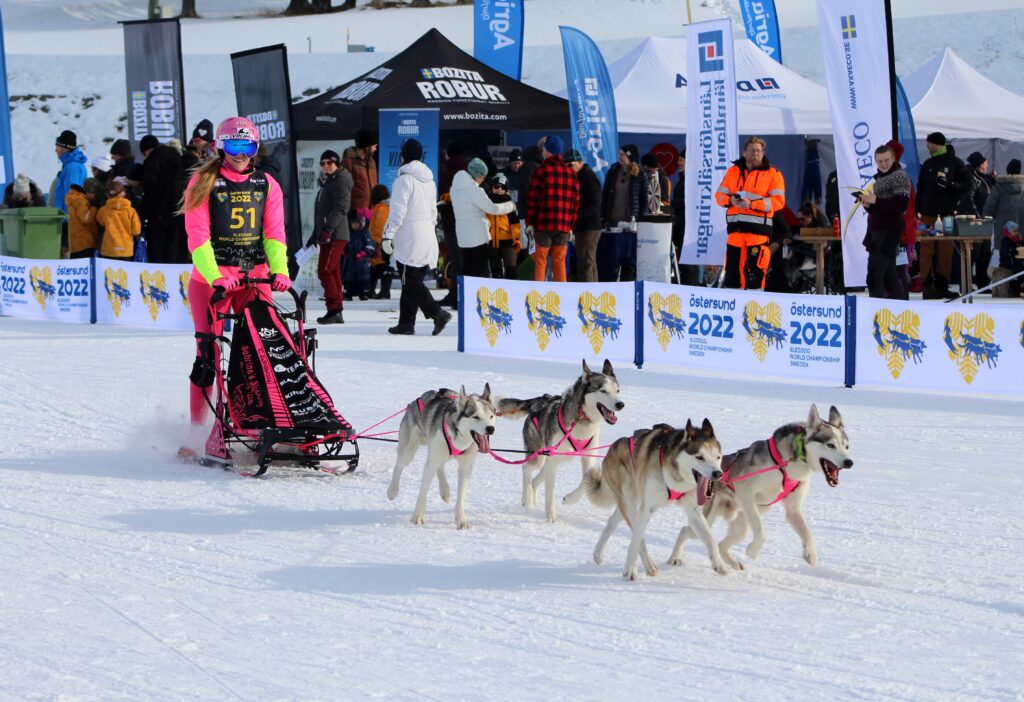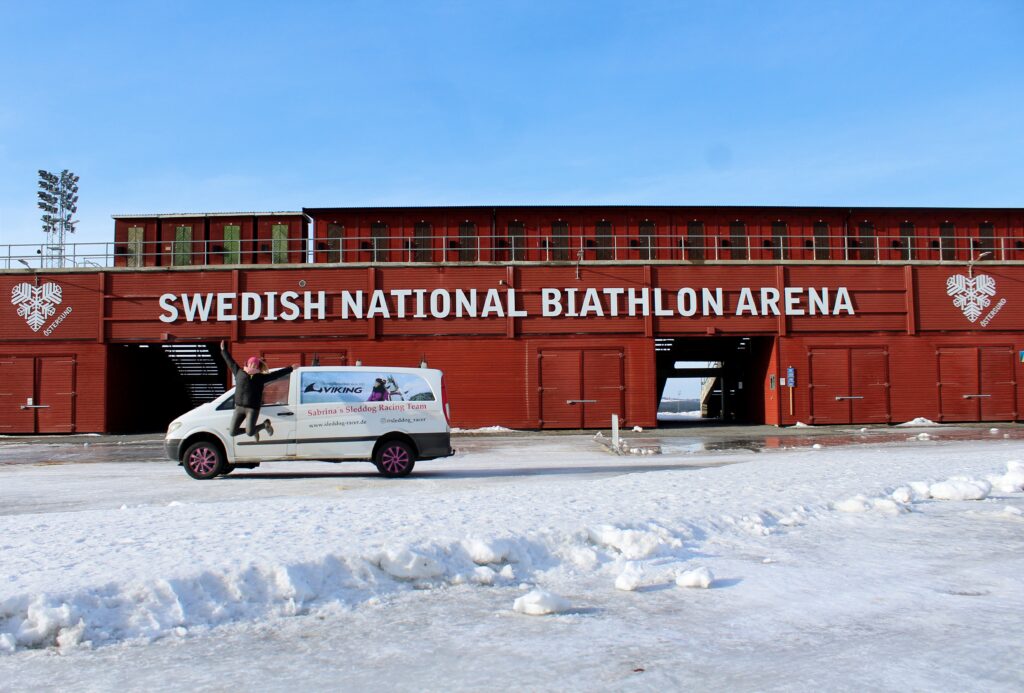Sleddog racer Sabrina from the district of Garmisch-Partenkirchen has been successful in sled dog sport since 2016 and was allowed to go to the World Championships of the WSA (World Sleddog Association) in Östersund from 10-12 March. Very special was not only that the event took place in Östersund, Sweden, but that the start and finish were located in the large biathlon stadium. The athletes do not experience such a scenery every day. Sabrina started with her dogs Shakira (6 years), Einstein (5 years), Sia (4 years), Pirelli (2 years) in the 4 dog class.
The international teams mastered the mostly long journey to Sweden with their dog transporter or trailer. To Östersund with the dogs in the airplane to travel used against it none of the participants as option, since it would have been probably clearly more stressful for the dogs. From Germany it was a three day journey from Bavaria over 800Km to Rostock and then with the ferry to Sweden, before it went again over 1000Km up to Östersund. Of course always with enough stops, overnight stays and pee breaks with run, water and food for the dogs. Especially because Sabrina's dogs love their dog boxes, it was fortunately not too much of a strain for them. After the long journey from Germany, the first thing they did was to take a closer look at the surroundings and the route.
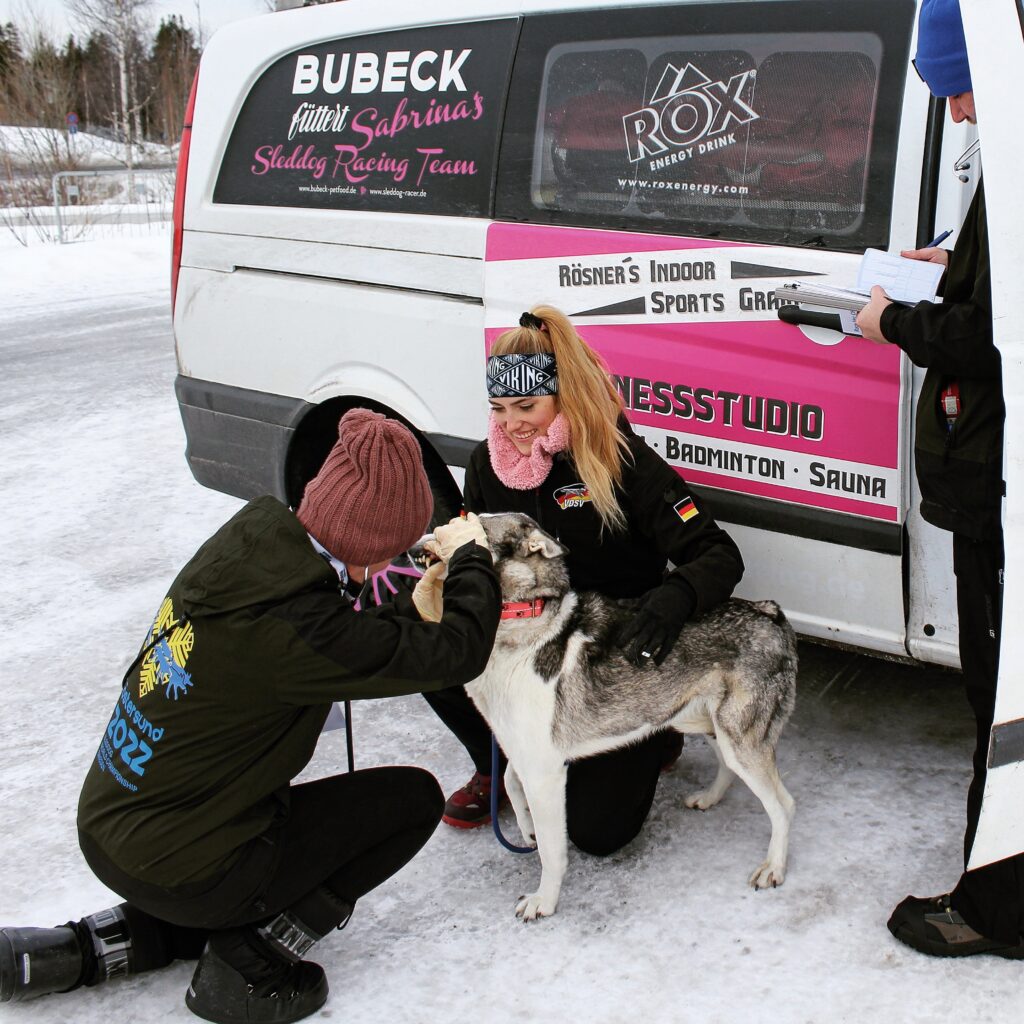
Three competition days in a row
The competitions were spread over three consecutive race days with one run each. The respective run times were then added up and added to a total time, which resulted in the placement at the end. Before the first race day, there was also an extensive vet check where several veterinarians examined the dogs thoroughly from head to paw. Every little thing like a misalignment of the teeth or the missing of a tooth was documented. Then the FCI papers of all participating dogs were checked for purity and chip identity. Likewise, of course, the participants had to show the vaccination certificates for their dogs. In addition, heart and lungs were listened to and if no abnormalities were found, the dogs were approved for the start.
The race tracks in sled dog racing
The different race courses consisted of different distances for the respective categories. The categories are dependent on the number of dogs at the start. For this purpose, here is a small overview:
2er Gespann, 2 Hunde vor dem Schlitten: ca. 4,2km
4er Gespann, 3-4 Hunde vor dem Schlitten: ca. 8,2km
6er Gespann, 5-6 Hunde vor dem Schlitten oder
Skijöring, 1 oder 2 Hunde einen Langläufer ziehend: ca. 12,4km
8er Gespann, 7-8 Hunde vor dem Schlitten: ca. 13,6km
Unlimited, mehr als 8 Hunde vor dem Schlitten: ca. 17km
Außerdem gab es auch eine Mitteldistanz Strecke von ca. 32km.
All race participants were assigned their own start time, at which they had to be in the starting area. One category was followed by the next category after a short break of a few minutes. The start time interval in the 2 and 4 dog class was one minute, the start time interval from the 6 dog class was two minutes.
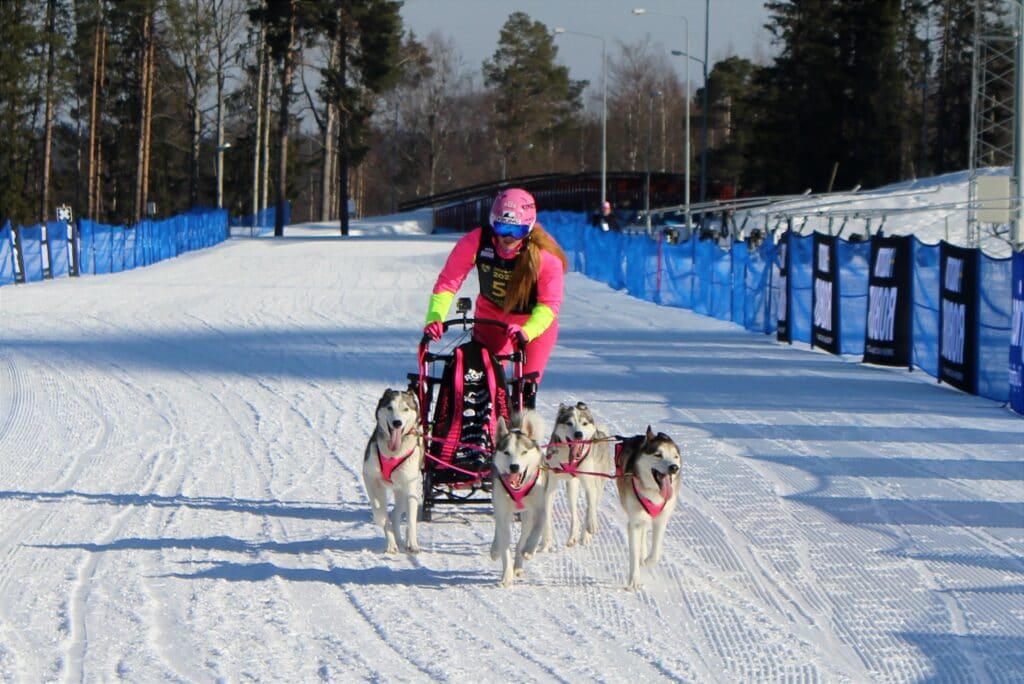
The last minutes until the start
During the competition on site, the dog athletes make sure that the dogs drink enough water so that they don't eat snow on the course while running and also don't get dehydrated. About ten minutes before the start time, the dogs are put on their X-Back harnesses. Unlike the everyday harness, which ends at the level of the ribs, this pull harness reaches to the base of the tail and serves for optimal power transmission as well as distribution of the load when pulling the sled over the entire dog's body. Then the dogs are fastened for a short time at the Stake Out (a special tethering device), before all four are clamped and it goes toward start. There the teams wait until the previous starter pair has started and then advance to the starting line. In this case, the sled's tip borders the start line, which means the dogs stand behind the start line and wait for their start. The last 5 seconds are counted down, 5...4...3...2...1...GO, and off they go at full throttle.
Full throttle on the competition track
All race tracks in Östersund led through the forests around the biathlon stadium, so the different trails were also perfectly prepared. The command tracking is mainly demanded from the two front leader dogs, so that they can master every change of direction or trail situation on demand. On the trail itself there are also always overtaking maneuvers between the teams, which usually work smoothly, because the dogs are well behaved and trained to handle these actions. Then it's a matter of steering the dogs through the course and reaching the finish as quickly as possible.
Even though it wasn't enough for Sabrina and her dogs to finish at the top, the racing team had a lot of fun during the races. "This has been especially evident in my big grin and the tail wagging dogs at the finish line." Sabrina is pleased after the race days. Then the dogs at the finish line are first properly praised by her before it goes on to the chip control by the controllers. This measure is always necessary, so that no dogs in the sprint race can be exchanged on the 3 race days by other replacement dogs. After that, it's back to the car and each dog gets a treat reward. And this is important, because the dogs always get a reward for their performance, even if the run was sometimes not so good.
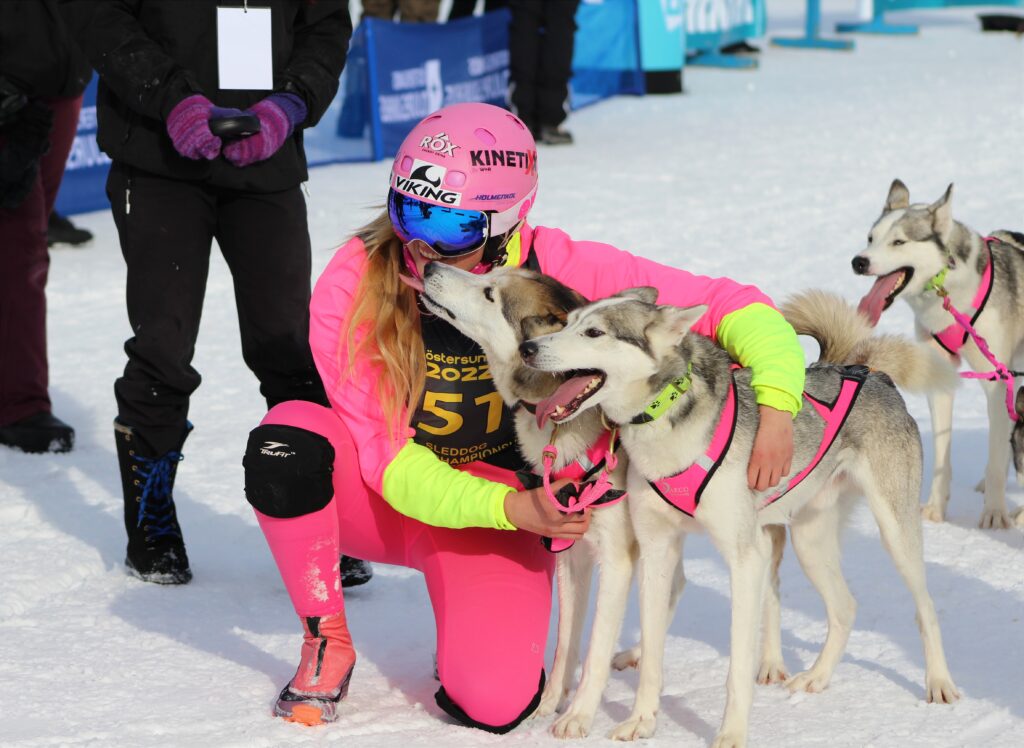
Safe equipment is the key
Wearing safe clothing during the race plays a very important role for the sled drivers. For Sabrina, this includes back protection, a helmet and suitable gloves. Just as in the biathlon, sensitivity in the fingers is also required. To harness or re-harness the dogs in the team, carabiners have to be opened. In addition, Sabrina not only stands on the sled, but kicks away to the left or right or even runs along. Therefore, the gloves must not be too thick for her. The biathlon glove Folke from the glove manufacturer KinetiXx is therefore not only ideal for the top stars in the biathlon, but also for the races in the sled dog sport. Of course, in the icy temperatures before and after the race, warming overgloves are also very important here, so that the fingers remain warm and mobile. Because all athletes:inside know, cold fingers should be avoided at all costs.
Finally a word about sled dog sport
There is of course, as with any discipline that is performed together with animals, in the sled dog sport criticism from the outside. Sabrina always counters this with an invitation to get to know her sport better: "I can only recommend that you come to one of our races, look at the relaxed dogs in their boxes and then, when they see only the harnesses for harnessing. How changed, the loudest howling goes off and no dog wants to remain more in its box and waits tail wagging full impatiently for its employment! At the finish line, they are patient and still wagging their tails as they go through the chip check." One thing is certain for the 23-year-old dog sportswoman, she loves her four-legged friends and does everything for them so that they are well. A world championship in a faraway country is always the icing on the sporting cake that very few get to experience themselves.
Fotos und Infos: Sabrina Cantu
